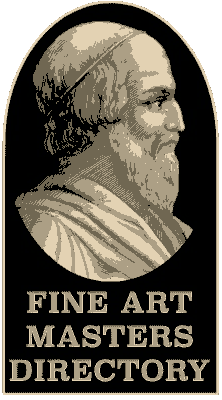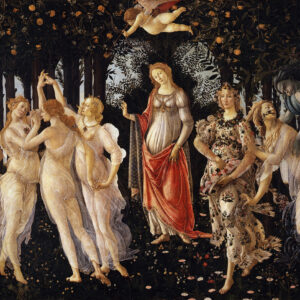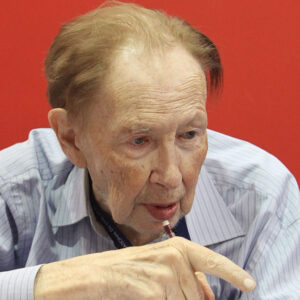Paolo Uccello (/uːˈtʃɛloʊ/ oo-CHEL-oh, Italian: [ˈpaːolo utˈtʃɛllo]; 1397 – 10 December 1475), born Paolo di Dono, was a Florentine painter and mathematician who was notable for his pioneering work on visual perspective in art. In his book Lives of the Most Excellent Painters, Sculptors, and Architects, Giorgio Vasari wrote that Uccello was obsessed by his interest in perspective and would stay up all night in his study trying to grasp the exact vanishing point. While his contemporaries used perspective to narrate different or succeeding stories, Uccello used perspective to create a feeling of depth in his paintings. His best known works are the three paintings representing the battle of San Romano, which were wrongly entitled the Battle of Sant’Egidio of 1416 for a long period of time.[1]
Paolo worked in the Late Gothic tradition, emphasizing colour and pageantry rather than the classical realism that other artists were pioneering. His style is best described as idiosyncratic, and he left no school of followers. He has had some influence on twentieth-century art and literary criticism (e.g., in the Vies imaginaires by Marcel Schwob, Uccello le poil by Antonin Artaud and O Mundo Como Ideia by Bruno Tolentino).
According to Vasari, Uccello’s first painting was a Saint Anthony between the saints Cosmas and Damianus, a commission for the hospital of Lelmo. Next, he painted two figures in the convent of Annalena. Shortly afterwards, he painted three frescoes with scenes from the life of Saint Francis above the left door of the Santa Trinita church. For the Santa Maria Maggiore church, he painted a fresco of the Annunciation. In this fresco, he painted a large building with columns in perspective. According to Vasari, people found this to be a great and beautiful achievement because this was the first example of how lines could be expertly used to demonstrate perspective and size. As a result, this work became a model for artists who wished to craft illusions of space in order to enhance the realness of their paintings.[6]
Paolo painted the Lives of the Church Fathers in the cloisters of the church of San Miniato, which sat on a hill overlooking Florence. According to Vasari, Paolo protested against the monotonous meals of cheese pies and cheese soup served by the abbot by running away, and returned to finish the job only after the abbot promised him a more varied diet.[7]
Uccello was asked to paint a number of scenes of distempered animals for the house of the Medici. The scene most appreciated by Vasari was his depiction of a fierce lion fighting with a venom-spouting snake. Uccello loved to paint animals and he kept a wide variety of pictures of animals, especially birds, at home. This love for birds is what led to his nickname, Paolo Uccelli (Paul of the birds).
By 1424, Paolo was earning his own living as a painter. In that year, he proved his artistic maturity by painting episodes of the now-badly-damaged Creation and the Fall for the Green Cloister (Chiostro Verde) of Santa Maria Novella in Florence. Again, this assignment allowed him to paint a large number of animals in a lively manner. He also succeeded in painting trees in their natural colours. This was a skill that was difficult for many of his predecessors, so Uccello also began to acquire a reputation for painting landscapes. He followed this with Scenes from the Life of Noah, also for the Green Cloister. These scenes brought him great fame in Florence.
…


















